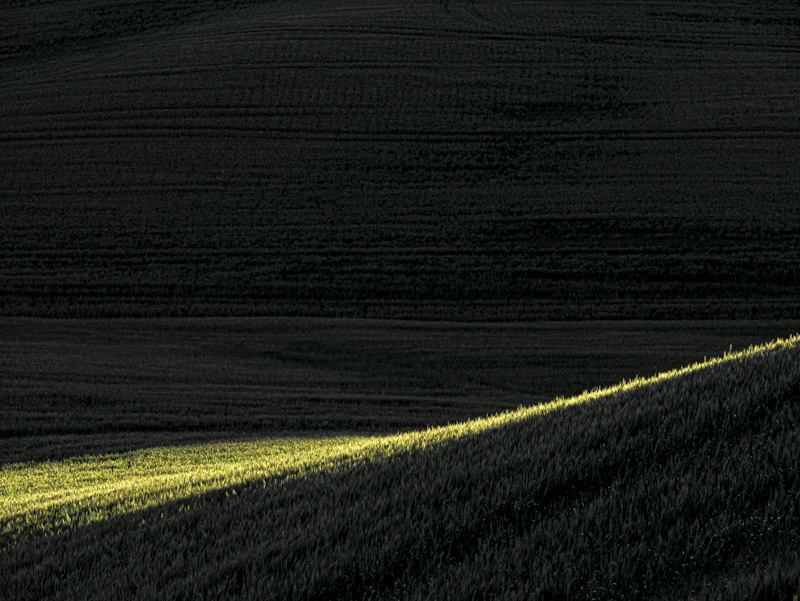Every Picture Is a Compromise
Lessons from the Also-rans
Most photography websites show the photographer's very best work. Wonderful. But that's not the full story of a creative life. If we want to learn, we'd better pay attention to the images that aren't "greatest hits" and see what lessons they have to offer. Every picture is a compromise — the sum of its parts, optical, technical, visual, emotional, and even cosmic – well, maybe not cosmic, but sometimes spiritual. Success on all fronts is rare. It's ok to learn from those that are not our best.
This is a series about my also-rans, some of which I've been able to improve at bit (i.e., "best effort"), none of which I would consider my best. With each there are lessons worth sharing, so I will.
Original digital captureWhat I saw that I liked:That narrow shaft of dawn light just brushing the side of the wheatfield. What I don't like in the picture:For reasons I don't seem to be able to diagnose, the small shafts of wheat on the right side against the shadow are slightly out of focus. Wind? Cheap telephoto lens? Tripod movement? Missed DOF? I have no idea. I've done every trick I know to sharpen them, but in a reasonable-sized print, they are simply out of focus. Damn. What I learned:I knew that critical sharpness was important in this image, so before I moved the tripod, I chimped in the field to be sure it was tack sharp. I learned you can't always trust the chimped image to determine if it's tack sharp. 2nd Chances: What I might try nextIt has occurred to me that I could use extreme magnification and painstakingly remove the individual pixels that are causing the blurred wheat. Probably faster just to drive the 8 hours to go back there and re-photograph it. |


